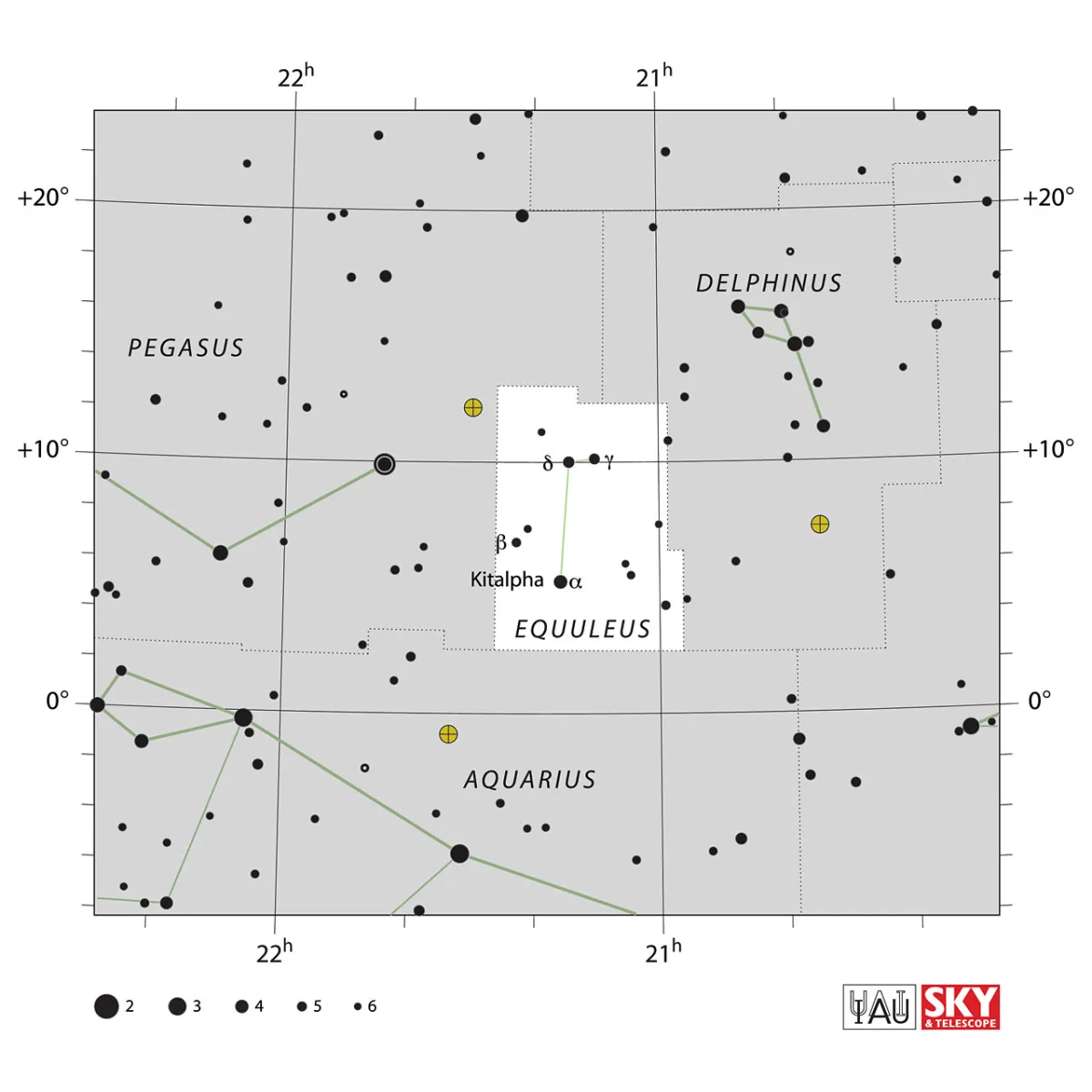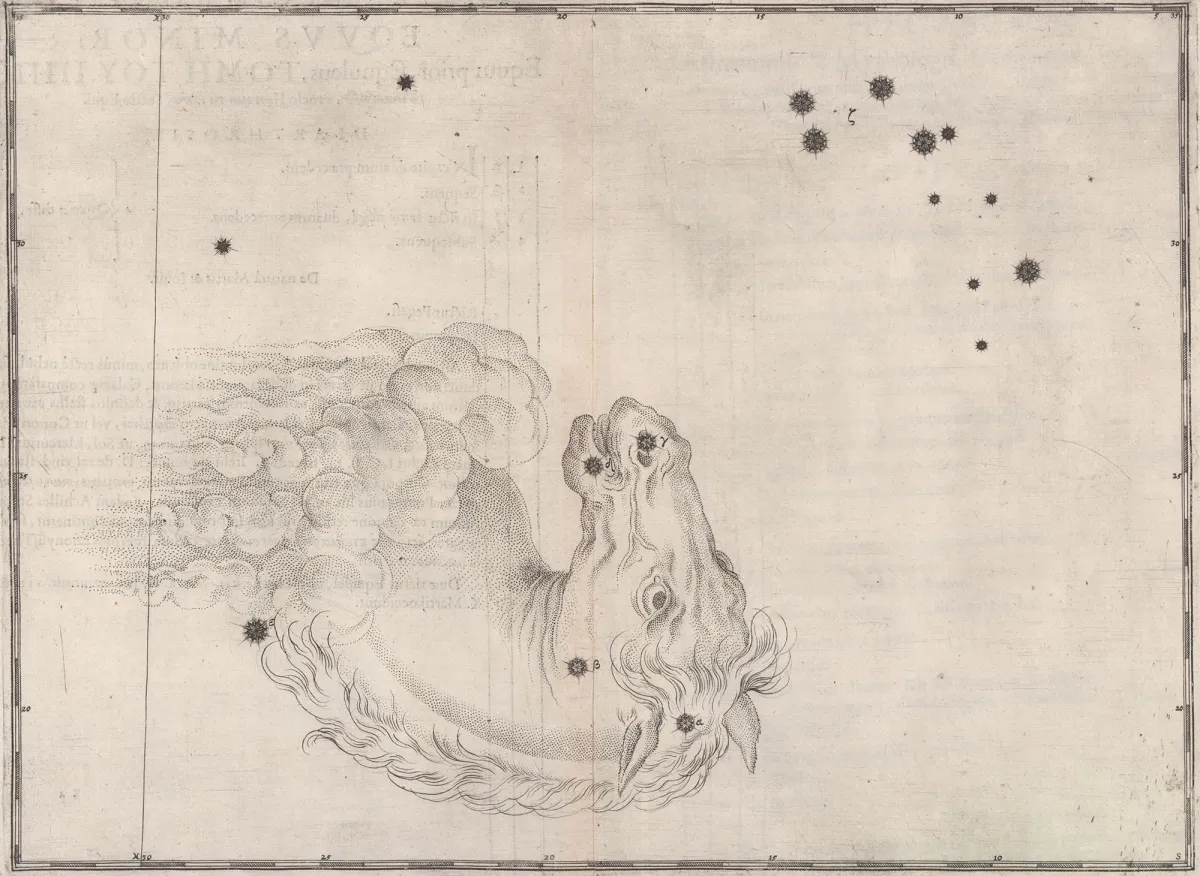Constellation Equuleus (Little Horse)

Properties
Equuleus is the second smallest constellation in the sky with 72 square degrees and is not particularly noticeable. It is east of Delphinus, right next to the head of Pegasus. The centre of the constellation culminates around midnight on August 9th. [9, 15]
| α Equ | Kitalpha, Kitel Phard, Kitalphar |
| IAU Name | Equuleus |
| IAU Genitive | Equulei |
| IAU Abbr. | Equ |
| English Name | Little Horse |
| Culmination at local midnight | 8 August |
| Season (Latitude +0.0°) | April … January |
| Right Ascension (J2000.0) | 20h 56m 11s … 21h 26m 20s |
| Declination (J2000.0) | +02° 28' 38" … +13° 02' 21" |
| Area | 72 deg2 |
| Neighbours (N↻) | Peg, Del, Aqr |
Catalogues

Mythology and History
It is said of this constellation that Hipparchus was born in 150 BC. Was formed from a few faint stars near Delphinus. Around three centuries later, Ptolemy summarized the constellation of four stars in his Almagest.
Although Equuleus is a small and faint constellation, it is associated with the legend of the first horse. A well-known Greek myth tells of a city that was looking for a name. Zeus, the king of the gods, decided that the city should be named either after Poseidon, the fierce god of the oceans, or after Athena, the goddess of wisdom. His final decision would be based on the gift the two gods gave the city. Poseidon's gift was a horse that he sculpted from the foam of the ocean waves. The first horse was a wonderful creature, but this gift from Poseidon - also known for his sudden, cruel fits of anger - was also considered a symbol of war. Then Athena came out and showed her present. It was an olive tree, which (then as now) was considered a symbol of peace. So the goddess won the competition and the city - known for her peace, wisdom and the arts - was named Athens. [55]
According to another interpretation, it is said to be Celeris, the brother of Pegasus, who is represented by the neighboring constellation. [7] According to another interpretation, it was a gift from Hermes (Mercury) to Castor. [10, 25]